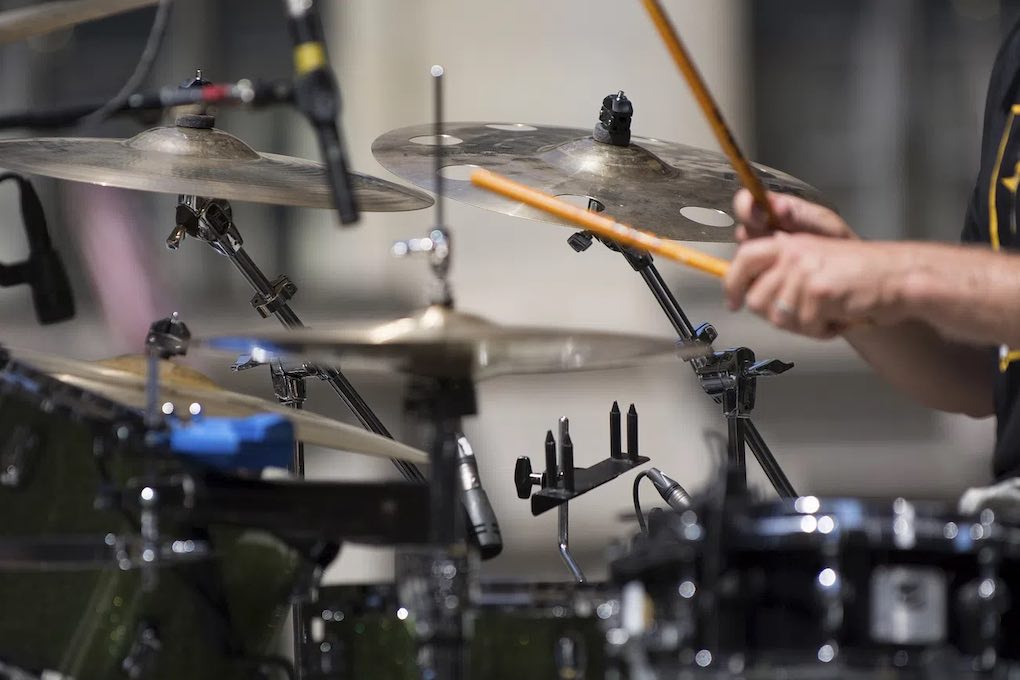- in Production by Bobby Owsinski
- |
- 2 comments
Basic Tips For Any Drum Miking Setup
While drum sounds depend so much on the drummer and the drum kit, there are some simple techniques that an engineer can use that go a long way to capturing the best sound. Here are some basic tips that work for any drum miking setup from my Recording Engineer’s Handbook 5th edition.

“As a general starting point before you even begin any drum miking, it’s important that you get a good picture of what the drum kit sounds like. To do this, try the following:
- Go into the room with the drums and have the drummer play the song that you’re about to record. Note the tone of the drums. It’s important that the drummer plays the song, since random playing or warming up might have a different intensity that can change the tone of the drums.
- Place a single mic 8 to 10 feet in front of the kit at about the same height as the drummer’s head. A large-diaphragm condenser will work nicely for this.
- Record the kit for a minute or two.
- Listen to the playback. Is the set balanced, or do one or two drums or cymbals stand out?
This will give you an idea of what the drum kit sounds like and what the issues may be when you begin recording, which now allows you to compensate by drum tuning, mic selection, or placement.
General Considerations
Here are number of things to consider that generally apply to just about any drum miking setup.
- Microphones aimed at the center of the drum will provide the most attack. For more body or ring, aim it more towards the rim.
- The best way to hear exactly what the drum sounds like when doing a mic check is to have the drummer hit the drum about once per second so there’s enough time between hits to hear how long the ring is.
- Try to keep any mics underneath the drums at a 90-degree angle to the mic on top to keep the acoustic phase shift to a minimum.
- Most mics placed underneath the drums will be out of phase with the tops mics. Switch the polarity on your preamp, console, or DAW and choose the position that has the most bottom end.
- Try to keep all mics as parallel to each other as possible to keep the acoustic phase shift to a minimum.
- The main thing about mic placement on the drums is to place the mics in such a way that the drummer never has to be concerned about hitting them.
- The ambient sound of the room is a big part of the drum sound. Don’t overlook using room mics where possible.
TIP: Remember that you’re going for a drum sound that’s appropriate for the song, not necessarily what’s a good sound.”
You can read more from The Recording Engineer’s Handbook and my other books on the excerpt section of bobbyowsinski.com.

